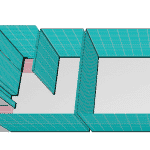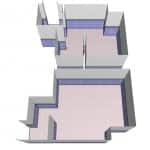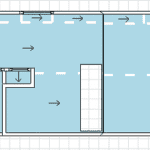MeasureSquare wouldn’t be what it is without our users. All the little enhancements we make and all the ways we push ourselves to stay ahead of the industry curve would be moot if we were directing it at a vacuum. From a family business passed down through the generations to a new venture started by a flooring newcomer, our user community is so varied and we want to showcase some of their stories with our Spotlight on MeasureSquare series.This month we’re thrilled to introduce Robert Tipping, founder of Checkmeasures. We speak to him about how the software fits into his day-to-day business operations and he offers advice on anyone who might be getting cold feet about committing their resources and traditional approaches to flooring takeoff programs.
Can you tell us a little bit about what you do?
I am the founder and manager of checkmeasures.com, a unique measuring and estimating service for the retail and commercial flooring industries. I am often asked to do other things within the commercial flooring Industry, such as coordinating, marketing, and project management, but all roles usually revolve around estimating and extended computer work. I no longer offer physical measure services; I am 100% committed to furthering the automation of sales and estimating in commercial floorcovering.
How long have you been using MeasureSquare? How do you use it in your business?
I have been using MeasureSquare for about 5 years now. There have been times when it was virtually the only software I used, sometimes logging as much as 60 hours a week–apart from notes (usually made in my favorite markdown editor) and a spreadsheet or two (generated by MeasureSquare) there was no need to consider anything else. From the initial trace to quickly qualifying square footage or viability, right on through to detailed shop drawings on some very large projects, MeasureSquare offers a complete solution for my business needs.
Lately I have incorporated it [MeasureSquare 2015] into social selling and advertising screenshot renders of real jobs with simple patterns, which presents a unique angle for slogans and sales pitches.
As a coordinator, MeasureSquare has a great range of tools to isolate and check areas within a large project.
Following up with an estimator whose work was produced with MeasureSquare is, quite literally, the closest I will get to being there. With the expectations today of multiple large projects administered simultaneously, MeasureSquare is my go-to tool for all repurposing.
Ideas on the boil are:
- Using MeasureSquare as an inventory mapping tool (warehouse, retail space)
- Export MeasureSquare into an Excel Gantt chart, further honing in to maximize data already created by estimator
Were you familiar with flooring software in the past? How has implementing MeasureSquare influenced your business?
It’s fair to say that I gave up on a lot of estimating software in the past. They were either hideously complicated and obviously not built for flooring, or they were too loose and too simple. I needed a fast solution to not only mitigate estimating challenges, but also the need to render full size prints and communicate ideas/changes/etc. via PDF (and sometimes image files). With MeasureSquare I have been taking on much larger bids and projects (and more of them), and because of the accuracy of the software–especially with sheet products–I have enjoyed a higher win rate. I am much more confident with estimating since employing MeasureSquare, but it goes much further than that: it allows me to package my work quickly for others to manipulate; it is a communication solution.
What advice do you have for industry professionals who might be hesitant about looking to software for their work?
I don’t think anyone in the commercial floorcovering world is not employing some kind of software into their workflow, but I still hear some folks complaining about the learning curve and still others who say that they are faster on paper.
What always gets overlooked in these comparisons is repurposing. Yes, it takes time to learn–any kind of data entry is time up front–but there is absolutely no comparison when accomplishing major changes in direction, product type, and multiple underlayment requirements. We didn’t even touch on the 3D rendering for those of us (guilty) who have trouble with 2D facades.
My advice is to integrate slowly:
- Gain confidence with familiar layouts first and then move on to partial project completion until you’re confident enough to run all the way.
- Keep learning the software, keep pushing for a better result.
- Integrate your estimating with other facets of your workday–make it one with your expectations and direction.
You can’t lose learning–practice what you can afford and you will get better at everything.





